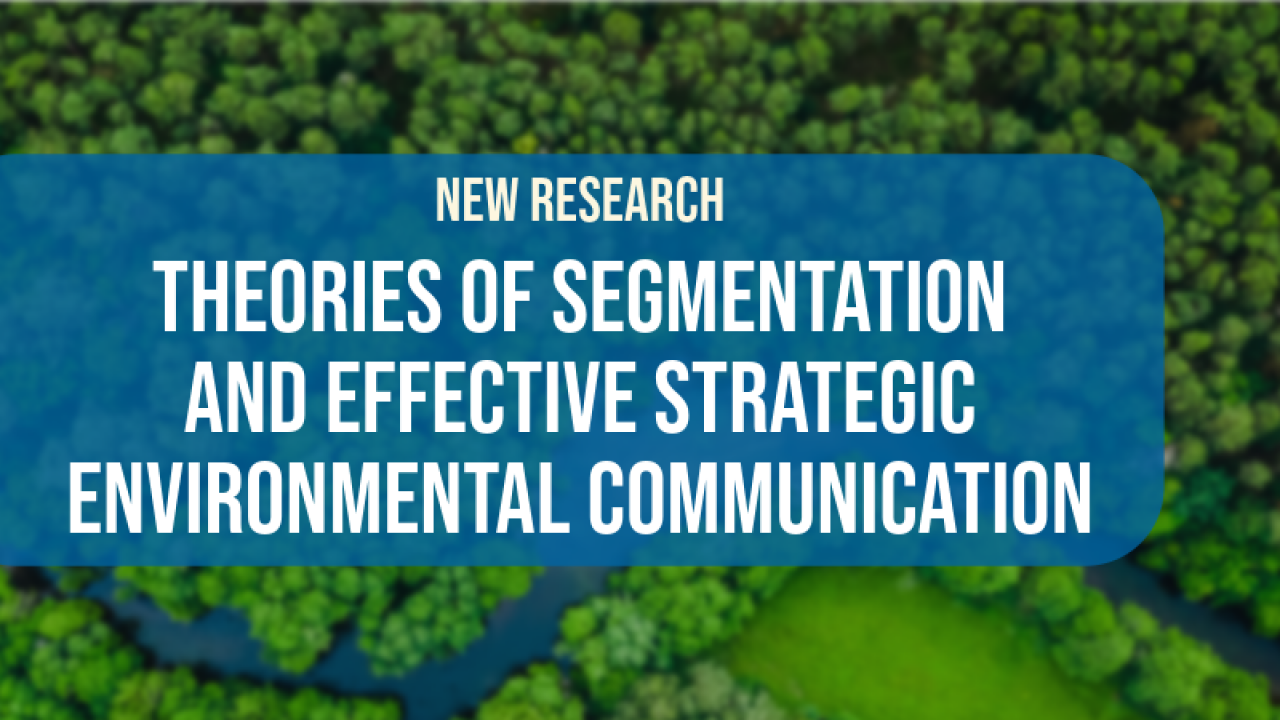February 20, 2024
Sustainability publics: Theories of segmentation and effective strategic environmental communication

By Hyelim Lee, Washington State University; Alessandro Lovari, University of Cagliari; and Cristina Vaz de Almeida, Technical University of Lisbon; Jeong-Nam Kim, The University of Oklahoma
Environmental sustainability is the long-term maintenance of factors and practices that contribute to the quality of the environment. A key goal for interventions is to foster public engagement and behavior that supports this sustainability. In this context, "plasticity" refers to the capacity for being molded or altered, a term used to distinguish it from the concept of 'elasticity' in economics. It represents the potential to transform current non-adopters into active participants in environmental protection efforts, according to previous research.
The challenge is to shift non-adopters towards behaviors that protect the environment and to actualize plasticity. This requires moving beyond simplistic views of public behaviors and recognizing that the public must first see an environmental issue as a genuine problem. This is the crucial first step toward meaningful environmental sustainability.
Mass media campaigns often need to be more effective in generating public concern, as nonpublic, latent groups tend to overlook these efforts. Rather, the aware, active public engages with information only when it is relevant to their interests, which can lead to the ‘problem recognition effect’. Prioritizing aware, active, and activist publics makes sustainability communication effective “strategic communication.”

This effect arises when active public members seek and attend to information to address an issue and engage in discussions with others, potentially recognizing a 'problem chain' or the embeddedness of a problem in a larger network. This recognition can reveal the interconnectedness of various problems within a broader network of issues, where solutions may be applied across related problems.
Harnessing the problem chain recognition effect requires acknowledging that individuals are unlikely to take action on unrecognized problems. Therefore, it is necessary to identify and engage an aware and active public interested in a related issue that has yet to recognize the target problem.

The rationale mentioned above was tested via survey data. We conducted a preliminary study on US residents in June 2023 using an online survey panel from Prolific. The survey had 305 participants aged between 18 and 80 years old. We investigated public attitudes and behaviors toward three issues - pollution, climate change, and waste disposal. The survey measured various aspects such as problem recognition (PR), constraint recognition (CR), involvement recognition (IR), situational motivation (SMTV), communicative actions for problem solving (CAPS), government trust, knowledge level, and pro-environmental attitudes, and behavioral intentions. All items show reliability (alpha) greater than 0.7.
The results of public segmentation using the summation method indicated that 47.5% of the public is actively engaged with climate change issues, 54.4% with pollution, and 48.5% with waste disposal. Almost half of the samples were active public. Regression analysis showed significant positive effects of active public groups on SMTV, CAPS, knowledge, pro-environmental attitudes, and behavioral intentions across all issues (p < .05), supporting the importance of identifying the public segments first. These findings support the importance of identifying the active public in environmental communication strategies.
As part of our study, we conducted an indirect test to examine the problem-chain recognition effects among active public groups. We checked the mean values of problem-recognition scores in three different issues. In all three issues, we observed a high level of problem-recognition scores among the active public group. For instance, the active public group showed a mean value of 4.68 for both climate change and pollution issues, which was similarly high as the mean value of 4.48 for the active public group on the pollution issue.
We additionally conducted a Structural Equation Modeling (SEM) analysis to test the problem-recognition chains. This test supports the existence of the problem chain recognition effects, showing that a higher level of situational motivations about pollution and waste disposal issues increases problem recognition and involvement recognition of climate change issues.
This means that if campaigners raise awareness of local issues such as pollution and waste disposal issues, it will also heighten the awareness of global environmental problems such as global warming and climate change. The approach of addressing local issues first and then moving towards larger, global issues can be an effective way to run communication strategies efficiently.
Understanding the public's awareness and responses to specific environmental problems is crucial in developing effective communication strategies. This study suggests that recognizing the interconnectedness of environmental issues could shape public opinion and behavior by examining the plasticity and problem-chain recognition effects based on public segments. Segmenting the public based on their awareness and understanding of related environmental problems allows for targeted interventions using plasticity coefficients.
Furthermore, detailed profiles of the aware and active segments enable policymakers and communicators to devise more effective interventions and measure their effectiveness to ensure efficient and impactful efforts.
For further information on this study, please email Lee at hyelim.lee@wsu.edu . This project was supported by a 2022 Page/Johnson Legacy Scholar Grant from the Arthur W. Page Center.
